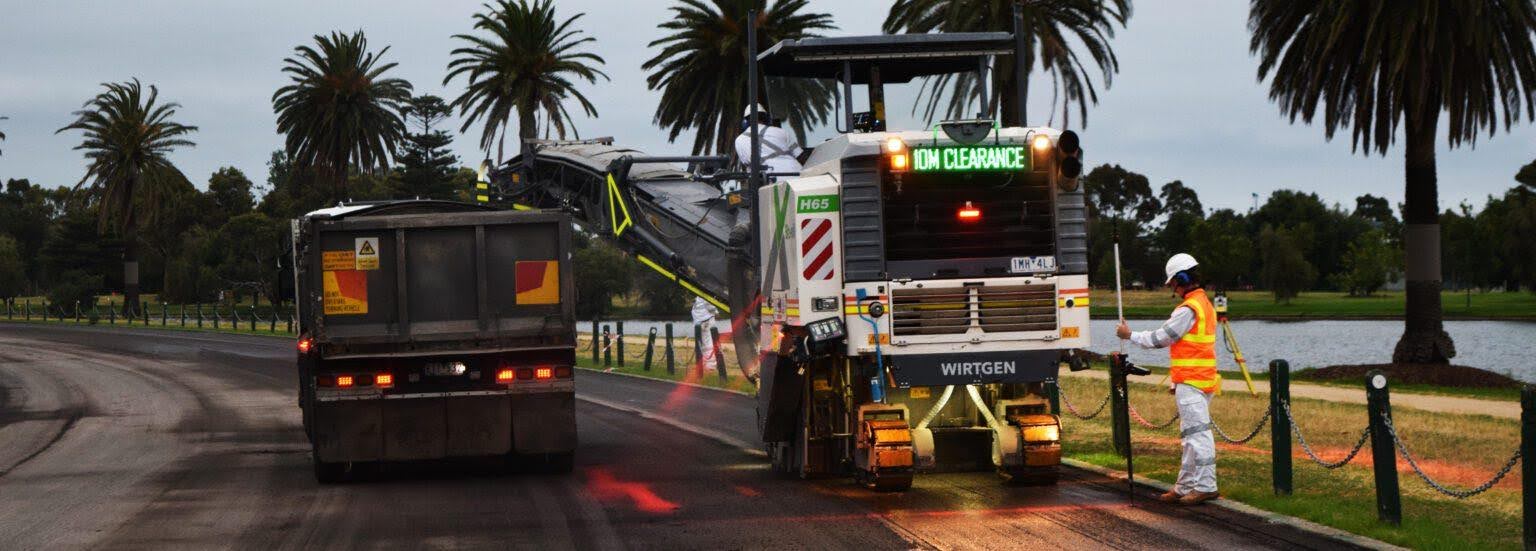
As the realities of climate change intensify, road infrastructure faces a formidable challenge. Heatwaves, heavy rainfall, and freeze-thaw cycles are putting traditional pavement designs under stress, leading to cracking, rutting, potholes, and premature failure. For civil engineers, the task is clear: design and deliver pavements that can endure these extremes while providing safe, reliable transport networks for the long term.
Climate Pressures on Pavements
Different weather extremes affect pavements in distinct ways:
- Heatwaves: Prolonged high temperatures soften conventional asphalt binders, making pavements more susceptible to rutting under heavy traffic.
- Heavy Rainfall: Intense downpours weaken the subgrade and increase the risk of stripping, where moisture reduces adhesion between binder and aggregate.
- Freeze-Thaw Cycles: In colder regions, water infiltrates cracks, freezes, and expands, causing pavement layers to fracture and spall.
Each of these stresses accelerates deterioration. Together, they demand pavement designs that are more adaptable, resilient, and sustainable.
The Role of Advanced Mix Designs
Traditional hot-mix asphalt has served well for decades, but extreme climate conditions require modifications. Engineers are now refining aggregate gradations, binder choices, and air void contents to create mixes tailored to environmental stresses.
- Dense-graded mixes limit air and water infiltration, improving resistance to moisture damage.
- Stone mastic asphalt (SMA) uses a high stone-to-mortar ratio to provide strength and rut resistance, ideal for hot climates.
- Open-graded friction courses improve surface drainage during heavy rainfall, enhancing skid resistance while reducing hydroplaning risks.
By selecting the right mix for the climate and traffic conditions, engineers can extend pavement service life significantly.
Polymer-Modified Binders: The Climate Game-Changer
The biggest leap forward in climate-resilient pavements comes from polymer modification of asphalt binders. Polymers—rubber-like materials blended into bitumen—dramatically improve performance across a wide range of temperatures.
- In hot weather, polymers increase elasticity and stiffness, preventing rutting and permanent deformation.
- In cold weather, they enhance flexibility, reducing the likelihood of cracking under freeze-thaw stress.
- During heavy rain, polymer-modified binders improve adhesion, reducing stripping and binder loss.
These binders are now a standard feature in many highway and airport projects, ensuring pavements remain serviceable even under intense environmental pressure.
Drainage and Subgrade Protection
Even the strongest asphalt surface will fail without proper drainage. As extreme rainfall events become more frequent, engineers are placing greater emphasis on subsurface design.
- Geotextiles and geomembranes are used to separate layers, preventing fine particles from contaminating base courses.
- Improved sub-base drainage layers direct water away quickly, minimising saturation and weakening.
- Permeable pavements are also gaining traction in urban environments, offering both resilience and sustainable stormwater management.
These measures protect the pavement foundation, ensuring the surface structure can perform as intended.
Asphalt Profiling and Preventive Maintenance
Building for resilience is only half the story; maintaining it is equally important. Asphalt profiling—the controlled removal of worn or deformed pavement layers—is a crucial step in rehabilitation. By correcting rutting, unevenness, or surface damage, profiling restores the base for a new overlay without requiring full reconstruction.
Preventive maintenance, such as seal coats and crack sealing, also reduces water infiltration and delays climate-driven damage. Together, these practices extend pavement life cycles while reducing long-term costs.
Sustainable Innovations in Asphalt
Sustainability and resilience increasingly go hand in hand. To meet environmental goals while improving performance, engineers are integrating recycled materials and warm-mix technologies into asphalt paving services.
- Reclaimed Asphalt Pavement (RAP) and Recycled Asphalt Shingles (RAS) provide high-quality aggregates and binders while reducing waste.
- Warm-mix asphalt (WMA) requires lower production temperatures, cutting greenhouse gas emissions and energy use while improving compaction.
These innovations allow pavements to be both durable against climate extremes and aligned with sustainability objectives.
Regional Responses: Tailoring to Climate Zones
Designing resilient pavements is not a one-size-fits-all approach. Engineers must adapt strategies to local conditions:
- Tropical regions focus on rut resistance and drainage.
- Temperate climates balance freeze-thaw resilience with heat flexibility.
- Arid zones demand pavements resistant to thermal cracking from extreme day-night temperature variations.
This climate-responsive approach ensures infrastructure investment delivers maximum value in each environment.
Collaboration and Future Directions
Delivering climate-resilient pavements requires collaboration between material scientists, engineers, contractors, and governments. Continued research into nanomaterials, bio-binders, and self-healing asphalt shows promise for the next generation of road surfaces.
As funding pressures grow, life-cycle cost analysis is becoming central to decision-making. Building pavements that last longer in extreme conditions may cost more initially, but they save significantly by reducing maintenance cycles and unplanned repairs.
As climate change reshapes the conditions under which our infrastructure must perform, pavements are on the front line. Through advanced mix designs, polymer-modified binders, and smart drainage strategies, civil engineers are redefining what it means to build resilient roads.
By integrating sustainability, preventive practices, and climate-responsive engineering, asphalt paving is evolving into a science of durability and adaptability. Whether facing heatwaves, floods, or freeze-thaw cycles, tomorrow’s pavements will be built not just to survive, but to endure.

